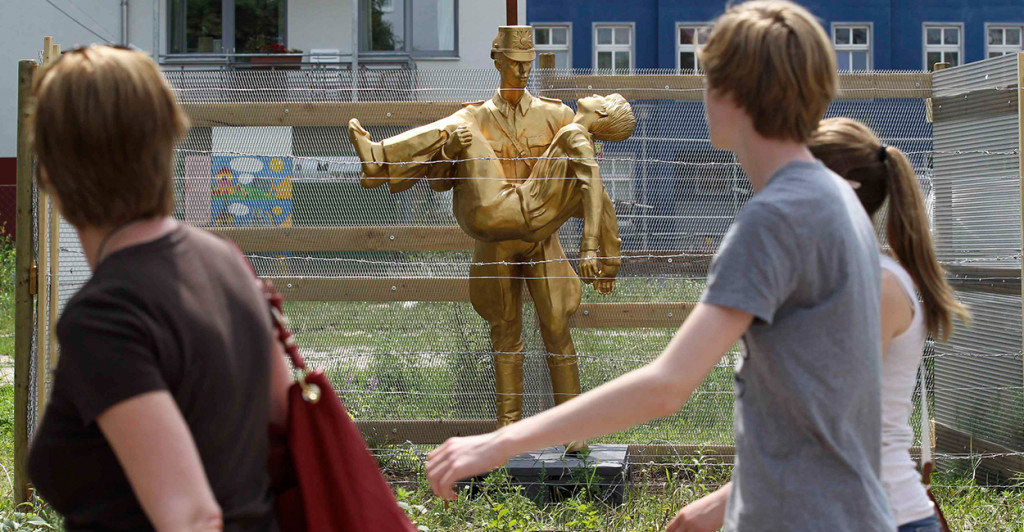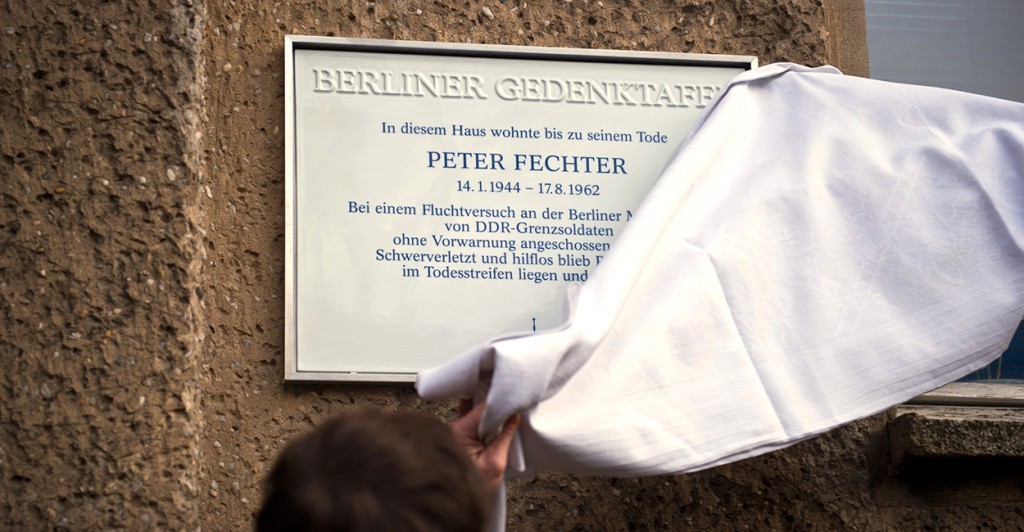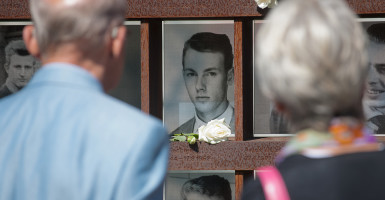Fifty-three years ago today, the eyes of the world turned to East Germany as an 18-year-old’s suffering became an international symbol of cruelty.
Peter Fechter, just 18 years old at the time of his death in 1962, was fatally shot down by East German border guards as he attempted to cross into West Germany during the Cold War conflict.
The quiet teen from humble beginnings was one of the first victims killed by border guards since the resurrection of the wall one year earlier in 1961. He fell onto the east side of the six-foot wall after bullets peppered his back and stomach.
With the young bricklayer was Helmut K., an 18-year-old coworker who managed to evade a shower of roughly 35 bullets before climbing over the Berlin Wall.
Helmut K. made it to safety as Fetcher lay screaming in pain for nearly an hour before his cries for help ceased. East German guards eventually carried him to a hospital, where he was declared dead.
Though the two teens had previously discussed a desire to escape to West Germany, they had not planned a crossing for that August day. In fact, they were merely exploring an abandoned carpentry workshop building during their lunch break when they heard voices, became frightened and went out a window, and found themselves at the border.

Artist Florian Brauer’s sculpture ‘Mauerdenkmal 1000’ (‘Wall memorial 1000’) sits on the so-called ‘death strip’ at the former Berlin Wall site. It depicts Peter Fechter being carried away by a border guard an hour after he was shot. (Photo: Newscom)
“I had reached the Wall by then, jumped up and forced myself through the barbed wire on the top of the Wall. I don’t know why Peter didn’t climb up,” Helmut K. said. “He should have been at the Wall before me. He didn’t say anything and I had the feeling when the shots were fired that Peter Fechter was in a state of shock. I called out loudly to him: ‘Come on, come on, hurry up!’ But he didn’t move.”
The tragedy was witnessed by horrified onlookers on both sides of the border. West German guards tried to help by tossing bandages over the wall, but they could not cross over due to safety concerns.
American soldiers at the nearby Checkpoint Charlie were not able to risk helping Fechter, either.

A memorial plaque was unveiled at Peter Fechter’s house in Berlin on what would have been his 70th birthday in 2014. (Photo: Newscom)
It was reported that shouts of “murderers” and “bandits” erupted from the several thousand people that had gathered, aimed at the three East German guards who had fired the shots. Communist police threw tear gas grenades to break up the crowd; Fechter had to suffer the intake of the tear gas as he bled to death.
Several years later, in 1990, one of Fechter’s two older sisters pressed charges against the East Berlin guards. In 1997, two of the guards who killed Fechter were convicted of murder and were said to have apologized.
A memorial plaque is now located at the Fechter home, in addition to a monument at the site of Fechter’s death, a sculpture along the so-called former ‘Death Strip,’ and a cross at the former site of the Checkpoint Charlie crossing point.

Participants in the Berlin 100 Miles run past the Checkpoint Charlie monument for Peter Fechter in Berlin, Germany. (Photo: Newscom)
In August 2014, around 300 ultramarathon runners traced the 100-mile-long path of the Berlin Wall to commemorate the 25th anniversary of the destruction of the Berlin Wall. Today, the path is a hiking and cycling trail that takes ultramarathon runners 16 to 30 hours to complete.
Runners receive a medal embossed with an image of Fechter once they cross the finish line.




























